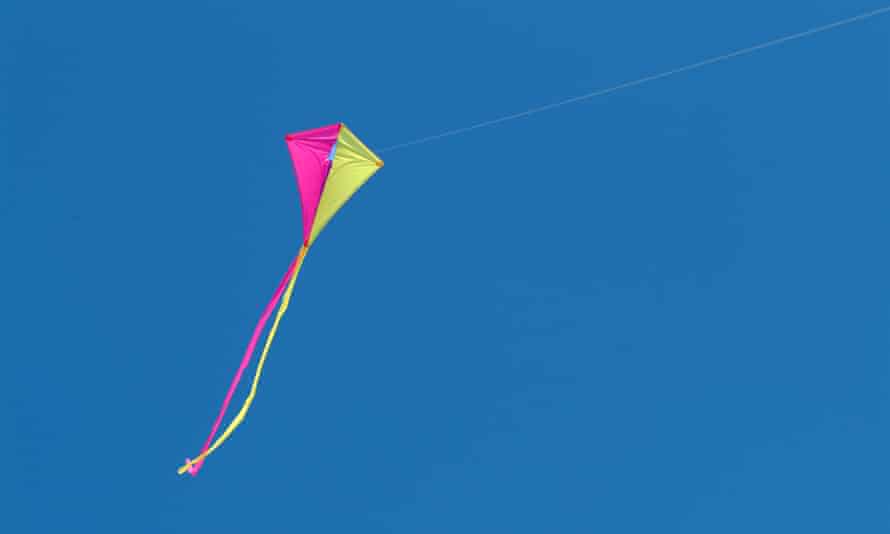
It’s 4.30am. This is my favourite time to write. Banging away at my keyboard in the almost-morning when Mark is asleep in the other room and the city is yet to stir. When I have only the wind for company.
I can’t see the wind but I know it is there. I can see how it plays. How it whistles through the seal of my balcony window, turning the wooden blinds into a vertical xylophone, how it quivers through the winter seedlings I’ve just planted in a row of pots, or how it skates across the moonshine mirrored on Sydney Harbour.
It must be fun to be the wind, to dip and dive and rumble and roar or just disappear quietly without a whisper. I’ve been watching the wind more closely these past few months. Of all the forces of nature, it’s the most elusive, always in hiding, only its actions giving away its presence. I want to harness those powers.
Which is why I’m planning to do something I haven’t done since I was 10 years old. I’m going to fly a kite. And I’m going to do it with Michael Richards, who knows a thing or two about kites – and the wind.
Michael and I are meeting outside the art gallery in the Domain. The lawns are buzzing with crowds arriving to see the finalists of this year’s Archibald Prize for portraiture. At this time of year, I would normally be with them, in the dim light, doing a crab shuffle from portrait to portrait, intently examining the walls of famous faces.
Yet these days, indoors holds so little appeal. I want to shout to the throng: Hey! Hang out with me instead! I have a date with the wind! My re-enchantment with nature has rekindled my inner child. I can’t wait to scamper through the grass, under the sun, squinting into the wide blue sky, tethered to a long-tailed comet. I can feel the joy rising just thinking about it.
Michael arrives carrying a long canvas bag big enough to fit a canoe. What’s he got in there? A kite that size could take us to the moon. With his gentle weathered features under his battered hat and his khaki attire, Michael could have walked out of a verse of Waltzing Matilda. People often use the phrase He walks with a spring in his step – well, Michael is one of those people who truly does.
Michael has been teaching people to fly kites for 30 years. In fact, seven years ago Michael and a group of his mates broke the world record for the highest-altitude kite flight. Their base camp was an isolated sheep station in outback New South Wales so they wouldn’t disrupt flight paths. Their determination was impressive: after 40 attempts over 10 years they finally cracked it, sending their kite an extraordinary 5km into the Earth’s atmosphere. Five kilometres! I’ll be happy just to get my kite off the ground. I feel a flutter of performance anxiety.
The Domain will make a perfect launch pad for my maiden lift-off – a large field of open grass, trees far away on the fence line, with no powerlines or obstructions. I’m concerned there’s only a kiss of a breeze, but Michael assures me the wind will appear when we need it. It blows differently this time of the year, here, near the Royal Botanic Garden. It tends to come off the water and change direction quickly. I’ll have to keep my wits about me.
Michael unzips his bag of assorted contraptions and pulls out a packet. It contains the kit for the first kite I’m going to flight-test. It’s a design similar to the ones from my childhood – a diamond shape with a long tail. It has a texture like paper but Michael explains it’s made from Tyvek – a polyethylene fabric that’s lightweight, durable and waterproof.
I tape down the two fibreglass rods in a cross on the back and then thread through some string attached to a spindle. The final touch – tying two long, blue and red shimmering ribbons to its bottom point that will act as a tail, giving the kite drag and balance.
My flying machine is ready.
We stride out into the middle of the field, following in the footsteps of all the great aviators who have gone before us. Michael holds up my kite and asks me to walk a few metres to the west away from him and then to give a tug on the string. The breeze is much stronger here surprisingly. Little gusts are swirling around my head, tossing my fringe in my eyes.

I follow Michael’s instructions and watch as my kite gently lifts into the air as if powered by magic. It hovers there for a bit until I release more string, and then it’s like taking a dog for a walk in the sky. The kite yanks at its tether, demanding more slack as it veers left then right, climbing higher and higher.
I start giggling inexplicably as sunlight bounces off the trail of shiny ribbons. Something as simple as watching this little kite dart and loop in the breeze is filling me with a giddy delight. It’s as though the kite is an extension of my body and my hand can touch the sky. It’s as close as I can get to being airborne myself.
Michael is enjoying my reaction. It’s why he likes teaching so much. And the teachers in his school groups get just as affected as the kids. Increasingly Michael is being asked to use kite flying to help students better engage with science and nature. He sees kids who struggle in the classroom come out of their shell during a kite session. They relish being freed from their four-walled enclosures and engaging in a battle of wits with the wind.
The enchantment of a kite is that it pulls you into a new focus. It takes you to the periphery of your ordinary attention, as biologist EO Wilson so perfectly describes it. There is no room in your head for worry or anxiety or rumination. You’re completely engrossed in the moment and the pressing task at hand – keeping your kite airborne.

At times it can require the utmost concentration, tugging at the string when the wind dips, releasing more slack as it picks up again, scooting a few steps here and then doubling back just as quickly. And then, in the next instant, nothing much is required from you at all other than just holding on and letting the current you’ve captured do all the work.
Flying kites is all about finding the right balance. It’s the art of knowing when to hold on and when to let go. To be a successful kite flyer is to be in a waltz with the wind, you and your dance partner drawing on each other’s strength, supporting one moment and then allowing yourself to be carried the next.
I’m not very good at allowing others to carry me. Too accustomed to being the big sister, the school prefect. As I flew my kites, I could see how I held the string too tightly, not letting the wind do some of the work. You’re always going to lose if you try to fight the wind. Surrender yourself to its currents and, like a kite, it will propel you forward.


